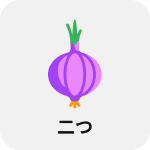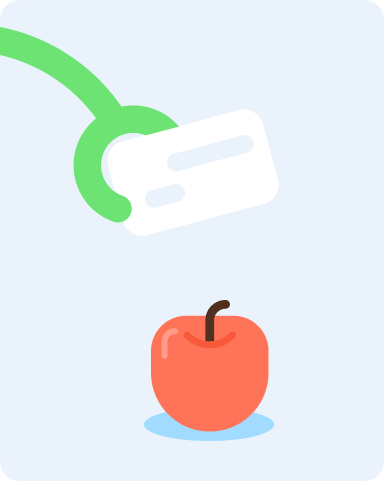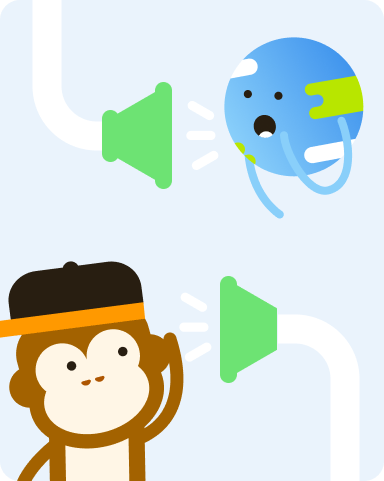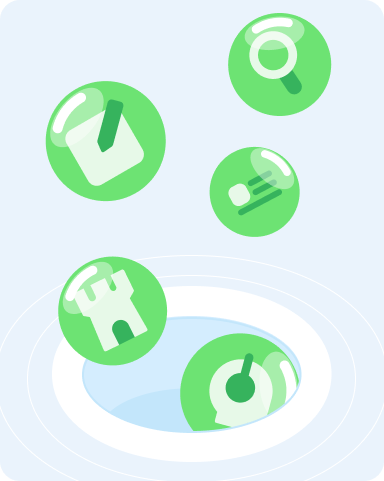Learn Albanian
with Ling
Use our comprehensive lessons, conversation topics, and more to connect with those closest to you
Used by 5M Ling Learners




What makes learning Albanian with Ling special
Interactive exercises
Elevate your Albanian pronunciation with our app’s interactive chatbot and enhance your listening skills with audio from native Albanian speakers
Engaging activities
Level up your Albanian with fun mini-games and our newest lesson review feature
Mix of languages
Besides learning Albanian, you can choose from over 60 languages, both big and small
Proven results
Backed by linguistic research, our learning methods can help you achieve fluency in record time

Master 4 language skills in 10 minutes a day




1-3 minutes to learn new vocabulary
3-5 minutes to review
3-5 minutes to test your listening skills
Done!
Join over 5 million language learners for a 100% guaranteed amazing language experience
Frequently asked questions about learning Albanian
Learning Albanian can be easy or challenging, varying from person to person based on factors such as your native language, previous language learning experience, and aptitude for language learning. For example, if you are a native English speaker, you might find Albanian to be more difficult, particularly because of how the words are pronounced.
According to the Foreign Service Institute (FSI), Albanian is classified as a category III language, along with Hungarian, Polish, Ukrainian, Hindi, Tagalog, and Malay. Many Albanian language learners compare the language to learning Russian, Bosnian, or even Spanish due to its grammar rules on endings.
However, no language is impossible to learn!
For some, it’s the pronunciation; for others, it’s the alphabet and sentence structure. Similar to Spanish, German, and Italian, Albanian has several conjugations. It has five declensions and 6 cases: Nominative, Genetive, Accusative, Dative, Ablative, and Vocative.
Albanian grammar might not be challenging if you’re already familiar with conjugating verbs and gendered endings. But, for native English speakers, the Albanian grammar rules can be overwhelming.
That’s why we’ve created a table to help you understand the similarities and differences between English and Albanian.
| Albanian | English |
Persons | 1st, 2nd, 3rd | 1st, 2nd, 3rd |
Numbers | Plural and singular | Plural and singular |
Mood | Indicative, Subjunctive, Admirative, Conditional, Optative, Imperative, | Indicative, Imperative, Subjunctive |
Tenses | Indicative (8 tenses) Subjunctive (4 tenses) Admirative (4 tenses) Conditional (2 tenses) Optative (2 tenses) Iimperative (1 tense) | Does not have specific tenses based on moods. Indicative (12 tenses) Subjunctive (3 tenses) Imperative (2nd person singular and plural) |
Gender | Masculine, Feminine, Neutral | Masculine, Feminine, Common, Neutral |
If you’re new to Albanian, don’t worry! As long as you make a consistent effort to practice the language, you’ll be able to learn specific plural endings of nouns and all the other grammar rules.
According to the FSI, an average learner might take at least 1100 hours to reach proficiency in Albanian.
Of course, you can always enroll in an Albanian language class or intensive courses to help you master the language quicker. Still, there’s nothing better than being surrounded by and learning from native speakers.
Traveling to Albania is the best way to learn the language, culture, and people. In a classroom, you can always revert to your native language if you get confused, but in Albania, you’ll have to learn the dialects, the 19 vowels in Gheg, the 29 consonants in Tosk, and so much more.
Should you decide to self-learn, countless online courses and materials are available nowadays, like the Ling app, which provides comprehensive and interactive lessons to help you develop your speaking, listening, writing, and reading skills.
The easiest way to learn Albanian is to immerse yourself in the language as much as possible. Begin by grasping the fundamental aspects of grammar and pronunciation. Enhance your listening skills by engaging with native speakers through various mediums such as videos, podcasts, and language exchange platforms. Utilize online resources, textbooks, and dedicated apps to learn Albanian.
Learning to speak Albanian can be rewarding and fun if you find the appropriate resources.
Consistently practice speaking and writing, actively seeking opportunities to interact with Albanian speakers. Dedication and maintaining a regular learning routine are crucial for achieving success in acquiring the language.
Here are some tips to help guide you along your Albanian language-learning journey.
-
Grammar: Albanian grammar is similar to its Balkan relatives. However, Albanian has a noun and gender-specific endings equivalent to Romance languages. We recommend you learn the conjugation of verbs and the singular and plural forms of nouns.
-
Vocabulary: Albanian uses several loan words from Latin and Romance languages. Albanian words will sound familiar if you’re familiar with basic terminology in Croatian, Serbian, or even Turkish.
-
Speaking/Listening: Since Albanian has two main dialects, you need to know the difference in pronunciation. To help you out, take note of the differences in the vowels and consonants.
-
Reading/Writing: The Albanian sentence structure is Subject-Verb-Object, similar to English, but in some cases, it can also be Verb-Object-Subject.
If you want to immerse in this language, download our learn Albanian app to assist you in this journey and improve your Albanian language skills. Using immersive language learning apps like Ling can help you build the foundation to succeed. Within the first lesson, you’ll learn the Albanian vocabulary you need for daily conversations with native speakers.
You are in the right place! You only have to download the app from the Play Store or App Store to get started!
At least 7.5 million speak Albanian worldwide, and 6 million are native speakers in the Balkan areas. Given its millions of speakers, Albanian has a rich background and history.
The language is technically part of the Indo-European language family, but interestingly, it has a separate branch. You’ll notice Albanian history closely connects to Illyrians, Thracians, and Dacians.
The Albanian language has two principal dialects: Gheg and Tosk. Standard Albanian is based on Gheg and is used in northern Albania. On the other hand, Tosk is a southern Albanian dialect with a history that dates back to Turkish Trace and Bulgarian.
Other Albanian-speaking countries include Bosnia, Herzegovina, Kosovo, Montenegro, Slovakia, Serbia, Croatia, and western Macedonia.















































